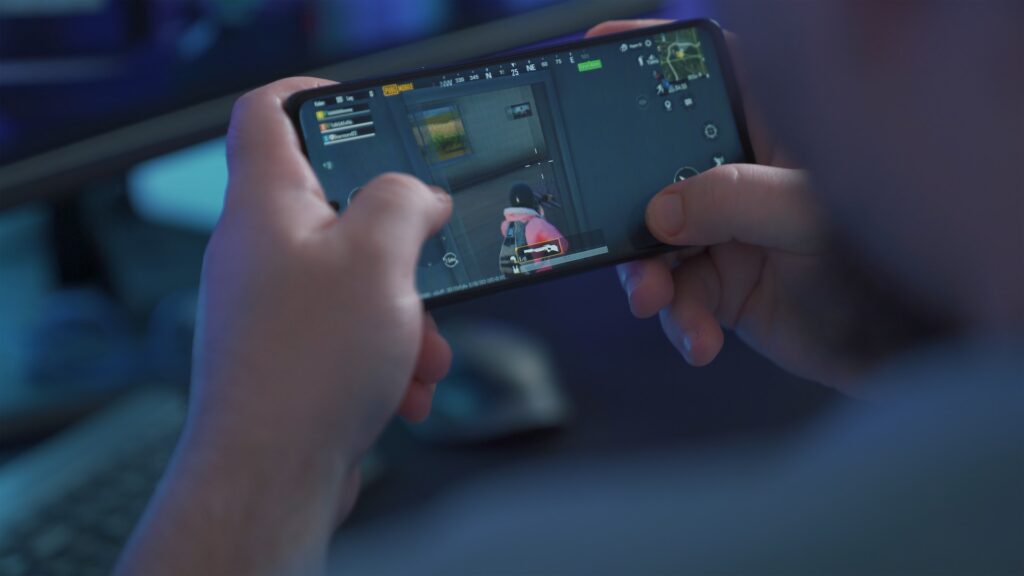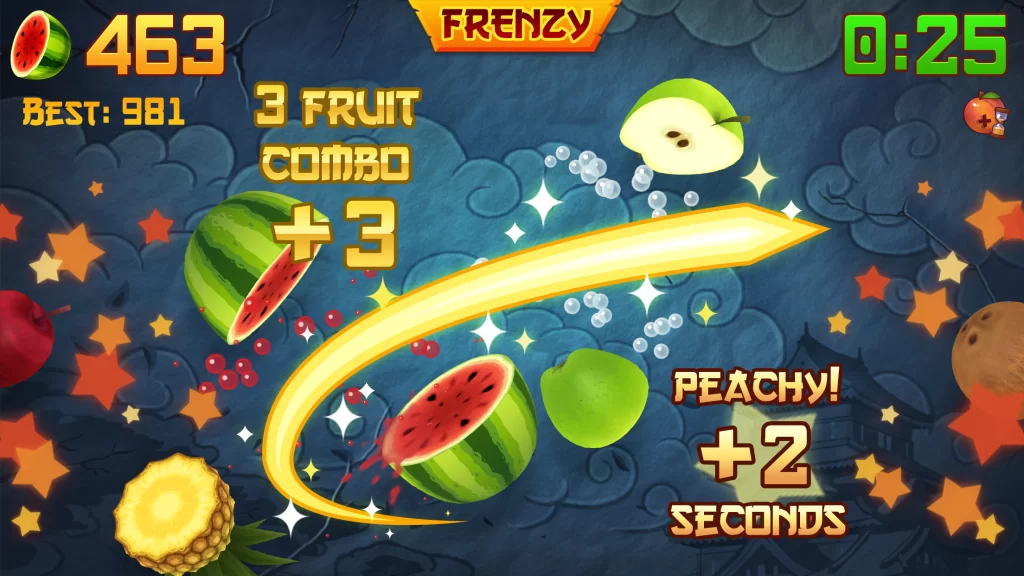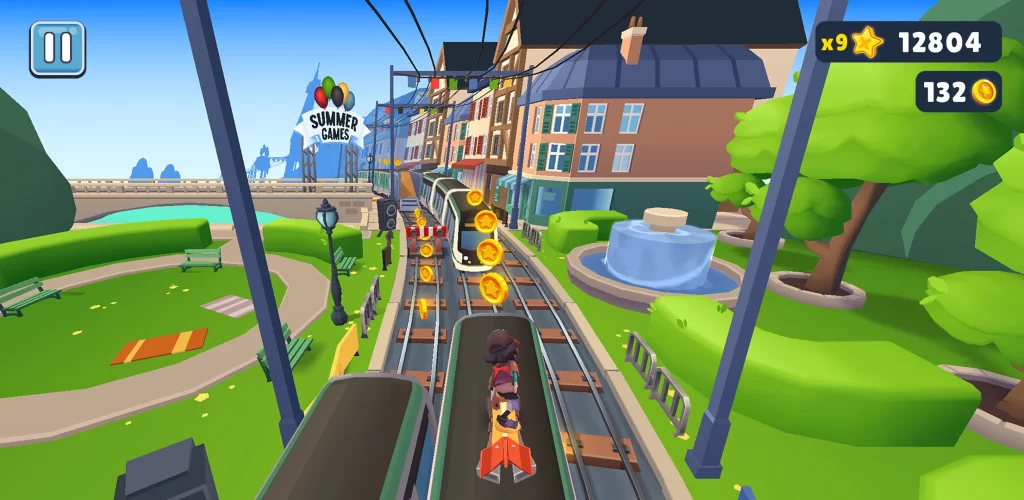You’re waiting in line at the grocery store and, like a primal instinct, your hand reaches for your phone. Within seconds, your attention is invested in guiding a colorful ball through a seemingly endless maze of obstacles.
Does it sound familiar? You’ve just experienced the allure of hypercasual games, one of the biggest phenomena in the mobile gaming industry. These deceptively simple yet highly addictive games created a niche for themselves, having since become a (tiny) part of millions of people’s lives.
In this article, we’ll explore the world of hypercasual games, explaining how they differ from your usual title, a list of some of the best in the genre, and how they generate revenue. We will also discuss some of the most popular hypercasual games for you.
Read also: How to hire a game development team
What are hypercasual games?

This type of game represents the distillation of video game design to its most fundamental elements. It’s similar to the fusion of a catchy pop song’s hook and the irresistible nature of snack food: simple, satisfying, and designed for quick consumption.
In other words, they take the concept of simplicity and build games on top of it. In fact, we can often define hypercasual games in the following traits:
- Minimalist mechanics: most can be learned in seconds following a quick tutorial. They usually require tilting the device or tapping/swiping the screen in a particular fashion, and that’s it;
- Brief play sessions: these games are designed for short bursts of play, ideal for filling tiny pockets of free time throughout the day. Waiting for your bus to come? Or perhaps the commute’s feeling a bit too boring? That’s the perfect time to whip out a brief gaming session;
- Engaging gameplay loops: despite their simplicity, hypercasual games are designed to create a compelling “just one more attempt, I swear” sensation, encouraging repeated play. This can be further incentivized by “meta progression” elements, where the player can spend resources for a tiny, permanent boost, making subsequent runs easier.
These games don’t demand extensive time commitments or complex strategies, yet they excel at capturing and maintaining player attention.
They usually forgo complex narratives, extensive character progression, or multi-layered level designs, instead concentrating on perfecting one simple, satisfying action – be it slicing virtual fruits, stacking digital towers, or finding your way in a maze that changes every few seconds.
What are some of the most popular hypercasual games?
Now that you understand how they differ from your usual games, let’s see 8 very popular hypercasual games:
Fruit Ninja (Halfbrick Studios)

Slice and dice your way through a colorful array of flying fruit in this classic touchscreen favorite. Fruit Ninja’s simple swipe mechanics made it an instant hit when it launched in 2010.
The game challenges players to slash fruits while avoiding bombs, creating a satisfying sensory experience with juicy sound effects and vibrant visuals. Its easy-to-learn, hard-to-master gameplay has kept players returning for over a decade.
Helix Jump (Voodoo)
This vertically scrolling game puts your timing to the test as you guide a bouncing ball down a spiral tower. Tap to rotate the tower and help the ball fall through gaps while avoiding red danger zones.
Helix Jump’s simple concept belies its addictive nature, with each level presenting a new, procedurally generated challenge. The game’s clean, minimalist design and satisfying ball-breaking physics make it endlessly replayable.
Crossy Road (Hipster Whale)
It’s essentially Frogger, one of the most iconic arcade games, but for the modern age.
Crossy Road tasks players with guiding a chicken (or one of many unlockable characters) across endless lanes of traffic and obstacles. Its charming voxel graphics and simple tap-to-hop controls make it accessible to all ages.
The game’s “just one more try” appeal comes from its leaderboard system and the constant urge to beat your own high score.
Subway Surfers (SYBO Games)

This endless runner puts you in the sneakers of graffiti-tagging teenagers escaping a grumpy inspector and his dog. Swipe to switch lanes, jump, and slide as you surf through vibrant cityscapes collecting coins and power-ups.
Subway Surfers’ colorful graphics, globe-trotting themes, and character collection aspects have helped it maintain popularity since its 2012 release.
Flappy Bird (Dong Nguyen)
Though no longer available, no list of hypercasual games would be complete without mentioning this viral sensation. Flappy Bird’s punishingly difficult gameplay – tapping to navigate a pixelated bird through pipes – sparked a global craze in 2014.
Its sudden removal from app stores by its creator only added to its legend – spawning countless clones and cementing its place in mobile gaming history.
Color Switch (Fortafy Games)
This deceptively challenging game tasks players with guiding a colored ball through obstacles of matching colors. Tap to make the ball jump, but time it wrong and you’ll crash into a mismatched color. Color Switch’s simple premise is pushed further by its pulsing neon aesthetic and rhythmic gameplay that almost feels like a music game at times.
Stack (Ketchapp)
Stack challenges players to build the highest tower possible by perfectly aligning falling blocks. Each misaligned placement results in the block being cut down to size, creating an increasingly narrowing margin for error. The game’s minimalist design and satisfying “thunk” of a perfect stack make it an addictive time-killer.
Hole.io (Voodoo)
In this quirky multiplayer game, players control a hole that grows larger as it swallows objects around a city. Compete against other players to become the biggest hole in town within a time limit.
Hole.io’s unique concept and chaotic gameplay make for hilarious sessions as you try to gulp down everything from trash cans to entire buildings.

How do hypercasual games generate revenue?
Despite making up less than 1% of the total mobile gaming revenue, these games have a unique approach to monetization. Almost without exception, these games are completely free to download and play, with only a rare few offering paid versions (without ads). This accessibility is key to their widespread popularity and rapid user acquisition.
The primary revenue stream for hypercasual games comes from in-game advertising, accounting for around 90% of their earnings. They come in various forms – banner ads that appear at the bottom or top of the screen during gameplay, as well as interstitial ads that pop up between game sessions.
There’s also the rewarded video ad, in which players voluntarily watch a short video advertisement in exchange for in-game benefits such as power-ups, premium currency, or unlockable characters. This approach integrates ads into the gameplay experience, making them feel less intrusive to the player.
The remaining 10% of revenue comes from in-app purchases (IAPs). While not the main focus, IAPs in hypercasual games include options to remove ads, unlock special characters or themes, or purchase in-game boosters. They are optional and don’t gate progress, maintaining the game’s accessibility while offering additional value for players willing to spend.
These strategies, when executed properly, align perfectly with the hypercasual philosophy: keep things simple and non-intrusive. The result is a win-win situation where players get free entertainment, and developers can sustain their businesses through ad revenue and optional purchases.
Closing thoughts

In conclusion, hypercasual games changed the mobile gaming landscape with simple yet addicting gameplay. These bite-sized digital experiences offer quick entertainment for players of all ages and backgrounds, fitting seamlessly into our busy lives in the form of tiny gaming sessions.
While they don’t provide as much depth as your usual AAA or indie game, hypercasual titles have found a winning formula – with simple mechanics, free access, unintrusive ads, and optional purchases, they created a sustainable ecosystem that benefits players and developers.
At Main Leaf, we’ve been at the forefront of game development for over a decade. Our team of experts understands the sauce going into designing games meant to be played forever!
Whether you’re looking to partner with us on your upcoming project or are looking for game development-related outsourcing services, you’re at the right place! Contact us to learn more about our solutions – and begin working on your hypercasual dream game today.

